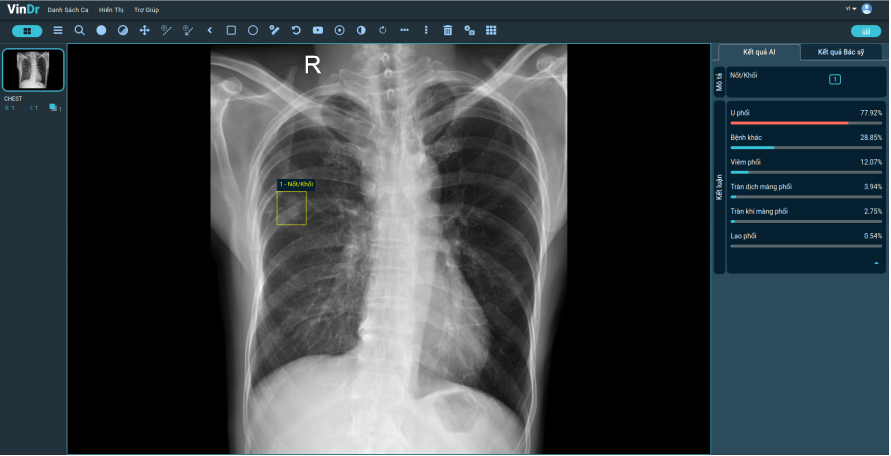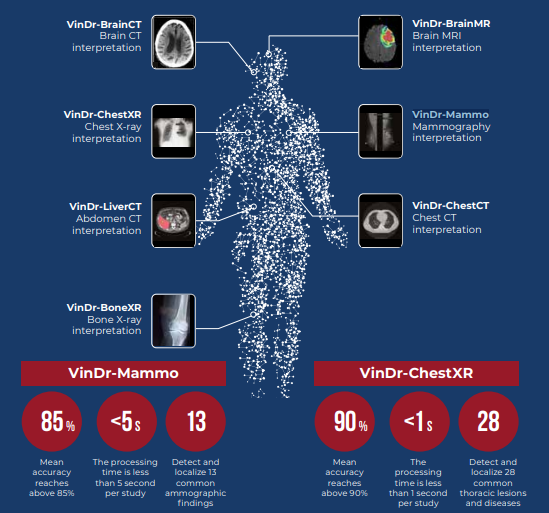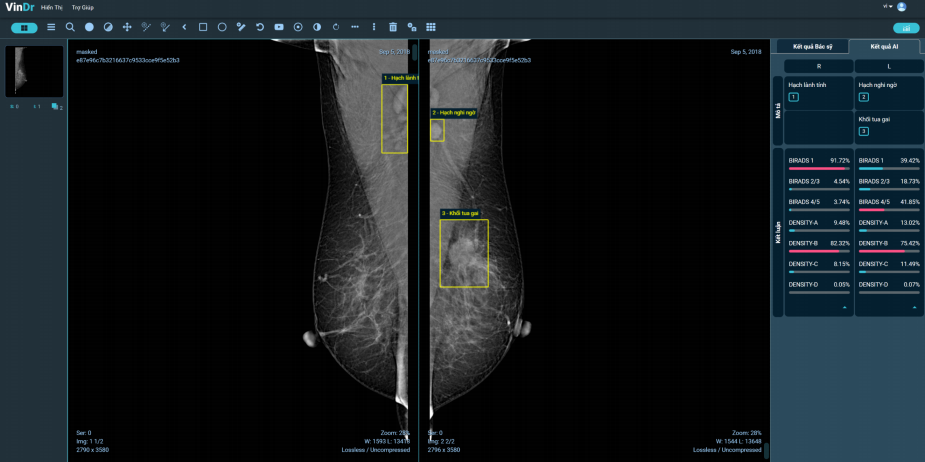Do you know that one of the most useful tools today for sales and customer service optimization is automatic chatbots? However, not everyone understands all about chatbot and its popular types, as well as how to use chatbot in the most effective way. So let’s go through all the basics of chatbot and why it is the solution to the problem of optimizing business efficiency.
1, What is a chatbot?
In the simplest sense, chatbot is a computer program combined with artificial intelligence and natural language processing technology to provide a real-person-like chat experience.

Today’s chatbots are usually divided into the three most basic categories:
- Button-based chatbot: The scripted chatbot is presented in a menu format. The chatbot buttons require users to make a few options to ask for information.
- Keyword recognition chatbot: The chatbot based on keyword recognition can listen to the user’s request and use AI technology to give appropriate answers.
- Contextual chatbot: Contextual chatbot uses Machine Learning and Artificial Intelligence (AI) technologies to remember conversations with specific users, thereby improving themselves and developing conversations over time.
2, How do chatbots work?
Chatbots interact with people through text or sound. Most chatbots operate according to the following general process:
- Translator: Information requested by users after being entered into the intermediate chat platform will be translated into programming language to help the computer understand the information needed.
- Processor: At this time, AI technology combined with natural language processing will handle the user’s request.
- Respondent: The computer will receive the result from AI and return the response to the user through the intermediary chat platform.
The content of the answers can be obtained from:
- The script has been prepared.
- Contextual information is based on the actual data provided.
- Database is available in the enterprise repository.

3, The most popular types of chatbots
With the rapid development of technology, many types of chatbots are produced to serve the needs of businesses. In general, chatbots can be divided into two main categories below:
Sales Chatbot
This type of chatbot can be created on websites, social networking sites to replace a vending employee. Normally, this chatbot will help manage messages and purchase comments on the page and website. The advantage of this type of chatbot is that it responds to messages very quickly and will definitely not miss any customer. Many types of chatbot today also support updating new information for customers and automatically create orders.
Customer Service Chatbot
This chatbot will be usually used by large businesses in the first step of online customer service. This chatbot will learn the answers according to the pre-installed scenarios and be ready to transfer the conversation to the sales staff for advice and orders. Today’s smart chatbots also have the ability to automatically learn new questions and answers to converse with customers as naturally as possible. Chat data with customers will be saved to create detailed statistics later.
4, Benefits of chatbots
According to research by Uberall, 80% of users say they have had a positive buying experience with chatbots. 69% of consumers say that they prefer to use chatbots because it helps them connect more quickly with businesses (Salesforce). This has proven the tremendous benefits of chatbot for business activities.
Attract new customers
With the ability to process millions of messages simultaniously, the chatbot is a great tool to create shortcuts for customers to your products. Using chatbot also gives you a lot of useful statistical information about customers’ psychology, their shopping habits and preferences, thereby adjusting offers and products more suitable.
Enhance customer experience
When customers first come to your website or page to explore products, the first thing is to keep them from staying. And chatbots do this very well. Customers can easily be instructed about the products they want. Chatbot operating 24/7 will always support customers without interruptions in space and time.
Increase sales
This is extremely understandable when instead of spending a lot of money on customer service human resources, businesses can free up resources for more important activities, directly creating business revenue and profit.
Customization
Now the chatbot is so personalized that it can tell you exactly the preferences, needs and shopping behaviors of customers. Based on these data, you can create viral chatbots to send messages directly to the customer’s inbox without giving customers the uncomfortable feeling of spam messages.
5, Some chatbot platforms you should try
There are many chatbot platforms on the market with many competitive prices and different uses. In Vietnam, although there are many chat platforms that are advertised to bring breakthrough business efficiency, in reality a few chatbots are thoroughly researched and created real business solutions.
The platform allows to automatically create viral chatbots and reply to customers’ inboxes and comments, and send remarketing messages. Users easily create automatic reply scripts for chatbot by mindmap and can get some basic information to take care of customers such as email and phone number. In addition, the free version also allows users to use without limitation of the number of customers.
Hana can be considered as one of the most popular chatbot platforms in Vietnam today. Besides supporting automatically replying to customers’ messages and comments, Hana also helps you to create funnels to improve customer service and effective marketing campaigns without any cost. In addition, Hana’s interface is also quite friendly and easy to use, making it easy for users to create scripts with just a few simple steps.
VinBot is a comprehensive chatbot product researched by leading AI experts at Vingroup Big Data Institute (VinBigdata). VinBot’s goal is to bring the best experience to customers and end users. With the ability to process 10000+ messages simultaneously, VinBot supports an unlimited number of customer care. VinBot also focuses on aggregating and analyzing user behavior, from which accurate information statistics can help businesses utilize their marketing campaigns.
The platform helps you automate sales and marketing processes. With the ability to process an average of 10 messages per second, businesses can easily apply this platform in customer service. NovaOnX also allows businesses to analyze data, serve customers by scenario and hide bad comments from competitors.
6, Conclusion
Above are the most basic concepts you should master before using chatbots for business activities. In addition to this knowledge, you need to find a reliable chatbot service provider to give you valuable advice instead of choosing less reputable and effective platforms with cheap prices. VinBigdata with a solid technology research background from leading professors in Vietnam not only provides businesses with tools, but also brings trust and quality from consulting of leading experts.
Contact us to together share your goals.
Lung cancer ranks 2nd among the most common cancers in Vietnam. With the ability to diagnose multiple cases simultaneously, at constant speed and accuracy and not limited by time or space, the application of Artificial Intelligence (AI) – VinDr can therefore support large-scale screening.
According to the latest statistics of the International Agency for Research on Cancer (IACR, under WHO), by 2020, Vietnam would up 7 places on the world cancer map. Specifically, our country ranks 92 out of 185 countries and territories, with a rate of 159.7 per 100,000, ranking 16th in Asia and 6 in Southeast Asia. In particular, Vietnam is one of the 50 countries with the highest cancer death rate in the world (106 / 100,000 people).
Lung cancer is one of top killers to Vietnamese people. Similar to the global general situation, in Vietnam, lung cancer, with 26,262 new cases and 23,797 deaths in 2020, was ranked 2nd among the most affected cancers in Vietnam for both genders. It is worth mentioning that up to 25% of lung cancer patients are diagnosed late, making it difficult for treatment.
Early diagnosis with various lesions
For gradually solving the lung cancer issue, the key is to increase the number of early diagnosis cases. One of the hallmarks of lung cancer is an infection that affects the respiratory tract and leads to diseases like bronchitis or other chronic infections. The chronic lung infections can be completely diagnosed early by using chest X-rays to localize the lesion. Therefore, currently chest X-ray is the first step for doctors to detect abnormalities before deeper interventions such as computed tomography (CT chest) or biopsy.
As the above fact, scientists of Vingroup Big Data Institute (VinBigdata) have put into the trial operation VinDr-ChestXR since June 2020. It is one of seven modules of VinDr – a comprehensive solution for medical image analysis that integrates Artificial Intelligence (AI) into a Picture Archiving and Communication System (PACS) to assist radiologists in making fast and precise diagnoses.

To be able to localize and classify a variety of lesions, VinDr-ChestXR is trained from more than half a million lung X-ray studies and nearly 300,000 scans in the community, especially leading Vietnamese hospitals. Collected data will then be “de-identified” and stored on the Label-PACS system for remote access and being labeled by doctors. The final result is for machine learning training. In addition, in terms of core technology, the software is also built from advanced technologies of artificial intelligence, including computer vision, deep learning, image analysis, Computer aided detection and Computer aided diagnosis.
Thus, with VinDr-ChestXR, the AI-assisted diagnostic system can detect 06 lung diseases and localize 22 common abnormalities on chest X-ray images. This is an important prerequisite step to determine the risk and progress of lung cancer in patients.
Large-scale lung cancer screening
According to statistics in 2020, Vietnam had an average of 1 doctor per 1,000 people, indicating hospital overload and enormous pressure on the medical system. Moreover, this human resource is unequally distributed among regions, leading to an increasing disparity in the quality of medical examination and treatment between rural and urban areas.
Artificial intelligence, with the collaboration of hundreds of leading doctors in the country, will become the solution to this problem. Thus, applying VinDr-ChestXR will help narrow the gap in the quality of cancer diagnosis between higher and lower level hospitals. Moreover, unlike doctors who only read each case in turn during their work time, the outstanding advantage of VinDr-ChestXR is the ability to automatically diagnose multiple cases simultaneously, working at a high speed and constant accuracy without any space or time limitation. In less than 1 second, the system was able to detect 28 common lung lesions and diseases. This is the key to reduce the overcrowding of the medical staff, thereby paving the way for a large-scale lung cancer screening.
High rate of accuracy
Implementing VinDr-ChestXR in the hospital is feasible, because artificial intelligence will not completely replace the role of the radiologist, but will provide an additional opinion for doctors to refer after reading the image. In other words, the system will be a powerful support tool, a consultant for doctors. Therefore, the application of VinDr-ChestXR means an increase in the accuracy level in disease diagnosis.
In fact, VinDr-ChestXR has been tested in major hospitals in Vietnam: 108 Hospital, Hanoi Medical University Hospital, Vimec Times City Hospital and 05 other ones in Phu Tho province. Evaluation results show that at 108 Hospital, an average of 10.5% of diagnoses changed after the doctor consulted AI, the average consensus of doctors with AI also reached 90.5%. This result was similar to that at Hanoi Medical University hospital, with the rates of 4.8% and 89.5% respectively. On average, the diagnosis accuracy of VinDr-ChestXR’s lung diseases was over 90%.

Besides VinDr-ChestXR, the system also has another feature that can diagnose lung cancer, namely VinDr-ChestCT for Chest CT interpretation. Currently, VinDr-ChestCT has been completed and will soon be put into trial implementation in hospitals. These modules promise to thoroughly and comprehensively solve the problem of early diagnosis of lung cancer for Vietnamese people.
Along with the detection of lesions and lung diseases, VinDr has many other modules, including: VinDr-BrainCT; VinDr-LiverCT; VinDr-BoneXR; VinDr-BrainMR and VinDr-Mammo. With the above features, VinDr aims to become a reliable medical imaging assistant for doctors, contributing to improving the quality of medical examination and treatment.
In addition to building VinDr solutions, from December 31, 2020 to March 31, 2021, VinBigdata organized Chest X-ray Abnormalities Detection on Kaggle, to provide a data set of 18,000 Vietnamese medical images for the domestic and foreign scientific community to develop solutions to Vietnamese health problems. See more details of the contest here.
The rate of Vietnamese women with dense mammary glands is often higher than those in Europe and America, making the risk of breast cancer is also 4-6 times higher. However, a good news is that artificial intelligence (AI) is now able to determine the breast density, serving the early diagnosis and screening of cancer.
The mammary gland has three basic components including connective fibrous tissue, parenchyma and fat. Doctors can determine four types of breast parenchymal density based on X-rays. Accordingly, while 80% of American women have an intermediate breast density between fat and fibroids; in Vietnam, due to small stature and less obesity, the proportion of women with dense breasts (mostly fibroids) is often higher, increasing the risk of related cancers. According to WHO statistics, by 2020, Vietnam has 21,555 new cases of breast cancer, of which 70% are detected late, significantly increasing the mortality rate.
Currently, according to the US Food and Drug Administration FDA, a mammogram is the only screening method that reduces mortality from breast cancer. X-rays can show calcifications and masses, which are the first typical symptoms of cancer. This method is therefore used both in diagnosis and screening, to screen a large area when the patient has no specific symptoms or to observe more clearly.
AI determines the density of parenchyma and localized breast lesions
From the practical use of X-rays in mammary structure imaging, for early detection of cancer cells, scientists from Vingroup Big Data Institute (VinBigdata) have researched and developed VinDr-Mammo. This is one of the seven modules of VinDr – a comprehensive solution for medical image analysis that integrates Artificial Intelligence (AI) into a Picture Archiving and Communication System (PACS) to assist radiologists in making fast and precise diagnoses.

To be able to perform multi-tasking on mammograms, VinDr-Mammo is trained from 50,000 studies collected at major hospitals in the country. Before being put into machine learning training, data will be “de-identified” and stored on the Label-PACS system for remote access and being labeled by doctors. In addition, in terms of core technology, the software is also built from advanced technologies of artificial intelligence, including computer vision, deep learning, image analysis, Computer aided detection and Computer aided diagnosis.
As a result, VinDr-Mammo can classify the density of the parenchyma, as well as localize 13 different types of lesions on a mammogram, with an average accuracy of over 85% and diagnosis time less than 05 seconds per scan.
When put into operation at the hospital, VinDr-Mammo will work as an assistant providing an additional objective opinion for the radiologists before delivering final results. In fact, trials at major domestic hospitals (108 Hospital, Hanoi Medical University Hospital, Vinmec Times City Hospital and 05 other ones in Phu Tho province) showed that, on average, over 10% of the diagnosis cases changed the results after the doctor consulted AI. Along with that, the average consensus of AI with doctors also reached 84% (at Hanoi Medical University Hospital).
AI supports BIRADS classification, paving the way for large-scale breast cancer screening
BIRADS (Breast Imaging Reporting and Data System) is a system to classify mammogram results according to the available scale. In which, BIRADS 1 shows no lesions; BIRADS 2 and 3 are more probably normal, but there’s a 2 percent chance of cancer. From BIRADS 4-6, the probability of a malignant tumor gradually increases (31-97%). This is one of the first bases for a doctor to decide whether to perform a biopsy to determine breast cancer or not.
Currently, with AI, VinDr-Mammo is able to classify BIRADS on a mammogram, aiming to accurately screen cancer risk. Furthermore, the software’s outstanding advantage is its ability to automatically diagnose multiple cases simultaneously with constant speed and accuracy, while each doctor can only read an image at a time. Combined, this is expectedly the solution to large-scale breast cancer screening, while meeting the need to store and transmit large-scale medical image data sets, with two-way integration into medical digital applications such as HIS / RIS / EMR / PACS, etc.
Along with the detection of breast lesions and diseases, VinDr also has other diagnostic modules including Brain CT interpretation; Chest X-ray interpretation; Abdomen CT interpretation; Bone X-ray interpretation; Brain MRI interpretation and Chest CT interpretation. With the above features, VinDr aims to become a reliable medical imaging assistant for doctors, contributing to improving the quality of medical examination and treatment.





